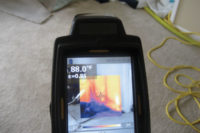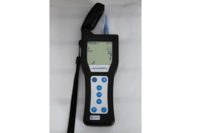Flood Houses: Why They're Important

Flood houses are structures that are built so they can be purposefully flooded with water in order to train water restoration technicians and insurance professionals.
Flood houses are structures that are built so they can be purposefully flooded with water in order to train water restoration technicians and insurance professionals. The task of training a water damage restoration technician is often difficult by traditional means, due to the complexity of information and the time constraints with which most training is conducted. And that’s where flood houses come into the picture: They’re being increasingly used as training tools at a time when rapid changes in the field of water damage restoration have never been greater.
Insurance carriers have been a driving force in emphasizing the significance of training and have made great efforts to ensure preferred vendors improve training quality and achieve better results. However, due to limited resources, some restoration companies will wait until a technician has had on-the-job training before sending new employees to school.
Restoration companies traditionally provide on-the-job training or acquire training from outside training sources, consultants or educational institutions. Among outside training providers, trade associations began training until certification became widespread. Historically, the characteristic partnership between external training providers and restoration companies has undergone momentous change. This continues today.
It is widely believed that several pioneers in restoration training began the “hands-on” training approach. While preparing to write this article, I spoke with several industry pioneers including Barry Costa, of Costa Group Education. Says Costa: “Many said that the only problem with teaching water damage restoration is that you could not do it hands-on.” Barry is not one to shy away from a challenge. In the early 1990s, he converted a platform that was originally used to teach carpet installation and repurposed it to instruct water damage restoration technicians. I believe this was the water damage industry’s first hands-on flood house. This platform was packed and unpacked for every school and shipped across the country in two large crates that required two hours worth of set-up time. As I mentioned earlier, Barry doesn’t shy away from a challenge.
In 1997 two other industry pioneers, Ron Colling and Tony Macaluso, discussed the benefits of building a structure that would allow students to learn in a hands-on environment. Ron developed this idea, and in the fall of 1997, built Tennessee’s first 12 x 8-foot flood house on wheels. The following year, in December 1998, Chuck Dewald, Jr. opened his hands-on flood house and began teaching his version of drying. Soon after Chuck Dewald began his school, Claude Blackburn built a flood house in Bellingham, WA and began hands-on training at Dri-Eaz in 1999. Along with a group of industry leaders, I attended one of Claude’s first training sessions in December 1999. Today, both the original Dri-Eaz flood house and a second facility built in Nashville, TN are part of the Restoration Sciences Academy (RSA), which began offering its own certification.
Today, there are 24 Clean Trust-approved flood houses around the world as well as many others accredited by competing certifying bodies. Additionally, there are many smaller buildings presently in use to instruct students on how to dry wet buildings. In fact, there are more innovators, industry trainers, and leaders then I can possibly name in this article.
Recently, Ed Jones, who is the Vice President of Education, Research and Development at CodeBlue, and I discussed his company’s collaborative partnership with Chippewa Valley Technical College in Eau Claire, WI and Clark State Community College in Springfield, OH, in which they have completed over 50 hands-on training classes. Together, CodeBlue and the colleges offer new courses in drying technology based on industry standards and best practices. Their model increases job opportunities at a time when the demand for knowledgeable technicians and insurance professionals with such expertise is increasing. The ultimate strategy developed by CodeBlue is to improve current practice and performance while instructing new employees who otherwise may never have experienced a flooded house. Ed also discussed how CodeBlue employees and contractors are sharing knowledge regarding industry standards, the science of drying and new drying technologies. “We have seen veteran adjusters and contractors who started the class with completely different viewpoints arrive at agreement on many issues just by going through the process of drying out the structure and contents together, and seeing with their own eyes how the new drying technology and equipment work,” he says.
Although the training provided by CodeBlue and local colleges has unique advantages for their employees and insurance clients, they are no longer alone in the collegiate world of educating restoration professionals. Purdue University professor Dr. Randy Rapp is another one of today’s pioneers bringing a new level of education to our industry. While Purdue’s new Disaster Management Program is still in its infancy, it is leading the way into the future for disaster professionals. Their flood house has yet to be built, but is in their short-range plans. Insurance Leadership, who helped fund and support the program, is watching its progress. “Nothing ever really takes the place of innovative, hands-on training with the conditions and equipment that drive the correct procedures,” Rapp says. “On-the-job, trial-and-error learning by new restorers can be too costly. This shows how cost-effective flood house training is.”
Other innovative trainers are using flood houses to conduct research and lead the way into new drying technology. Jeremy Reets, founder of Reets Drying Academy, provides training using a unique composition of drying equipment, which includes state-of-the-art drying technology such as directed heat drying as a standalone drying method, or combined with conventional drying techniques. Jeremy is changing the expected outcome of drying time. His customized programs use a team approach to solve drying problems.
Flood houses are not limited to specific curriculums. Bridgepoint Systems in Salt Lake City, UT, uses flood houses and instructors from around the country to provide hands-on training in various applications (e.g., hard surfaces, carpet cleaning, fire damage restoration). Many other suppliers and manufacturers do the same. The Connections Trade Show is another shining star that brings together volunteers from various trade associations to construct, flood and show restoration professionals how to utilize new tools and technologies. It is hands-on at its best. At the 2011 Las Vegas conference, a condominium-style building was constructed to allow industry manufacturers and trainers the opportunity to work side-by-side with attendees, answer questions and provide hands-on instruction. This year, the Connections Technical Conference in Florida and the Las Vegas leg of the convention and trade show promises to be even more instructive.
Today’s flood houses have become venues for research that are helping to stimulate new ideas and develop new products and technology. I encourage my clients to attend flood houses and I encourage you to attend one. The cost is a worthwhile investment in the future. As the late Bob Wittkamp, one of our great industry leaders, says: “If you think training is expensive - don’t train someone and see what it costs.”
I have no doubt that one of the most common functions of flood houses is to train and educate current and future workforces. I believe that partnerships between colleges and restoration training entities are inevitable for their continued existence. Hands-on training that began in the 1990s and culminated in today’s state-of-the-art flood houses has become the catalyst for positive change in this industry. Flood houses are the venue that have opened up communication between today’s educated contractors and insurance professionals, and have made it possible to reinforce how effectively and efficiently professional restorers dry a flooded home.
Looking for a reprint of this article?
From high-res PDFs to custom plaques, order your copy today!





